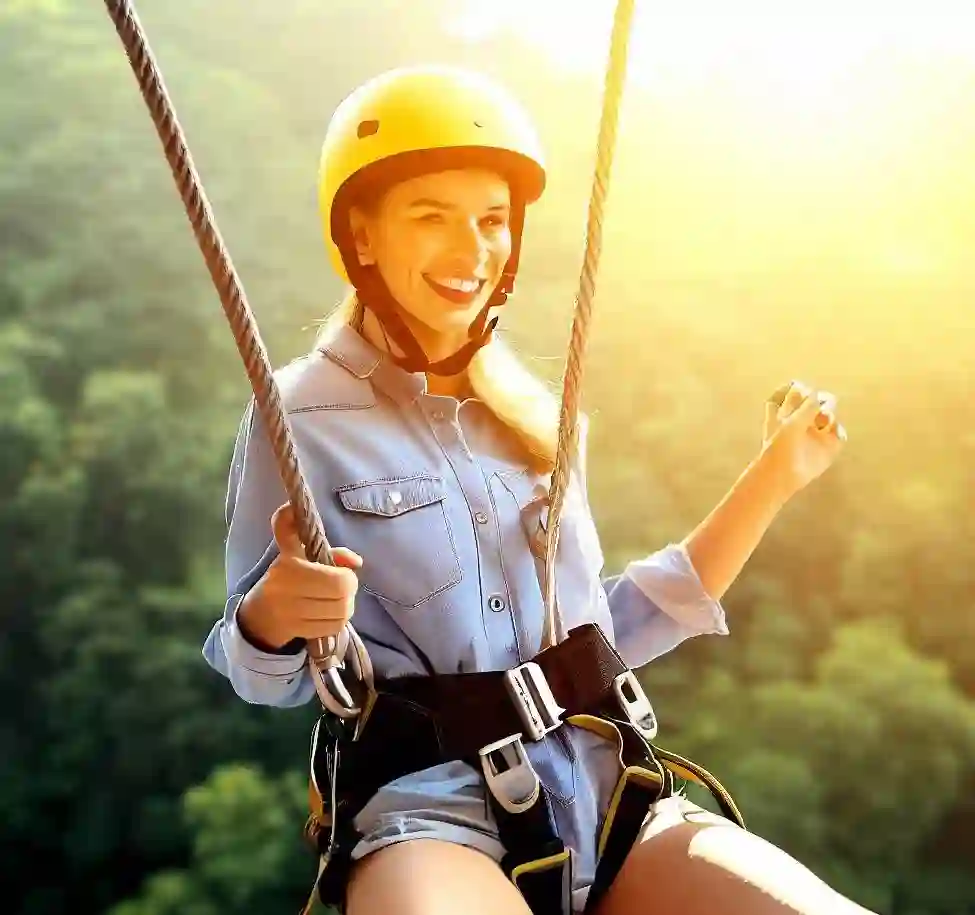Ziplining is generally safe, with low incidents of injury or death reported. Ziplining involves sliding from one point to another at varying heights, speeds and lengths using a pulley and cable system, often over vast landscapes or canyons.
Ziplines have been around for generations, utilized as a means of transportation across difficult terrains. In recent years, they have evolved into a popular recreational activity, attracting an increasing number of enthusiasts, particularly adventure seekers. Most zipline operators prioritize safety measures, ensuring that their guests are well-equipped and guided by trained personnel.
Despite being safe, ziplining may not be suitable for everyone, especially for those with medical conditions, pregnant women or children. Before embarking on this adventure, it is essential to check with the operator, familiarize yourself with the equipment, and follow safety protocols thoroughly.

Credit: www.vallarta-adventures.com
Understanding The Risks Of Ziplining
Definition And Concept Of Ziplining
Ziplining is an outdoor activity that involves a person gliding down a suspended cable or wire. This thrilling activity is also known as a zip-line, canopy tour, flying fox, or aerial runway. It is designed to give participants a unique adrenaline-filled experience, as they fly through the air at high speeds, taking in the views of their surroundings.
In ziplining, riders are propelled along the cable by gravity, making it an eco-friendly and unique way to experience nature. Ziplining can take place in different types of settings, such as rainforests, mountains, and even urban areas.
Common Injuries Associated With Ziplining
While ziplining is generally safe, there are some risks involved in participating in the activity. Here are some of the common injuries associated with ziplining:
- Neck and back injuries from sudden stops or collisions
- Lacerations and bruises from contact with equipment or trees
- Sprains, fractures, and other injuries caused by falls or impacts
- Burns from friction with the cable or wires
- Eye injuries from debris or particles in the air
It’s important to note that many of these injuries can be prevented by following proper safety protocols and using appropriate safety gear.
Importance Of Safety Equipment During Ziplining
One of the most important aspects of ziplining is safety. Using proper safety equipment is critical to ensuring that participants have a safe and enjoyable experience. Here are some of the safety gear that should be utilized:
- Helmets to protect against head injuries
- Harnesses to secure riders to the cable
- Gloves to protect against hand injuries
- Tethers to prevent falls
- Pulleys and carabiners to attach the harness to the cable
In addition to personal protective equipment, zipline operators must ensure that all equipment is well-maintained and up to safety standards. By taking the necessary precautions, participants can enjoy the thrill of ziplining while minimizing the risk of injury.
Factors Influencing Ziplining Safety

Ziplining has become a popular adventure activity for many people seeking an exciting way to experience nature from a bird’s eye view. However, with any adventure activity comes safety concerns, and ziplining is no exception. In this section, we will explore the factors influencing ziplining safety, including weather and environmental conditions, maintenance and inspection of ziplining equipment, and the experience and training of zipline operators.
Weather And Environmental Conditions
The weather and environmental conditions play a crucial role in ziplining safety. Here are the key points to consider:
- Ziplining should be avoided during thunderstorms, high winds, or other electromagnetic activity, as it can interfere with the proper functioning of equipment.
- Extreme weather conditions, such as severe rain, snow, or hail, can affect the strength and stability of cables, harnesses, and other equipment, and make ziplining dangerous.
- Zipline operators should be aware of the effects of temperature changes, such as frost, on equipment and cancel or reschedule activities as needed.
Maintenance And Inspection Of Ziplining Equipment
The maintenance and inspection of ziplining equipment is one of the critical factors influencing ziplining safety. Here are the key points to consider:
- All ziplining equipment should be regularly inspected and maintained by professionals to ensure that it functions correctly and safely.
- All equipment, including cables, harnesses, trolleys, and braking systems, should be thoroughly checked for signs of wear and tear, such as frayed cables, and replaced or repaired as needed.
- Operators should follow manufacturer guidelines and use high-quality equipment to ensure that all safety standards are met.
The Experience And Training Of Zipline Operators
The experience and training of zipline operators are crucial when it comes to ensuring ziplining safety. Here are the key points to consider:
- Zipline operators should be certified professionals with extensive training and experience in ziplining safety practices.
- Operators should have a thorough understanding of all equipment and emergency procedures, such as harness adjustments and braking systems.
- Zipline operators should regularly undergo training and refresher courses to stay up-to-date with the latest safety standards and practices.
While ziplining can be exciting and exhilarating, it’s essential to ensure that all safety precautions are in place. A knowledgeable and experienced zipline operator is just as crucial to your safety as the quality and maintenance of the equipment you use.
Frequently Asked Questions On Is Ziplining Safe?
Is Ziplining Dangerous?
Ziplining poses potential risks, but
statistics show that it is relatively safe
compared to other activities.
What Are The Safety Measures For Ziplining?
A reliable zipline tour operator will
provide safety gear, conduct regular
inspections, and have experienced guides
who prioritize the safety of their clients.
What Should I Wear When Ziplining?
It is recommended to wear comfortable,
light clothing, closed-toe shoes, and a
securely fastened harness that meets
industry standards. It is also advisable
to tie back long hair and remove any
loose jewelry.
Conclusion
After thorough research and analysis, it can be concluded that ziplining is generally safe, as long as proper safety protocols are followed and the zipline operators are certified and well-trained. While there is always some level of risk involved in any adventure activity, the chances of something going wrong while ziplining are relatively low.
It’s important to be aware of the potential hazards and be prepared by wearing appropriate gear and following all instructions given by the operators. Additionally, choosing a reputable zipline company with a good track record is crucial. Ultimately, ziplining is a thrilling and exhilarating experience that shouldn’t be missed, but it’s always better to err on the side of caution and put safety first.
So, if you’re up for an adventure, ziplining can be a safe and exciting way to explore nature and push your boundaries.



